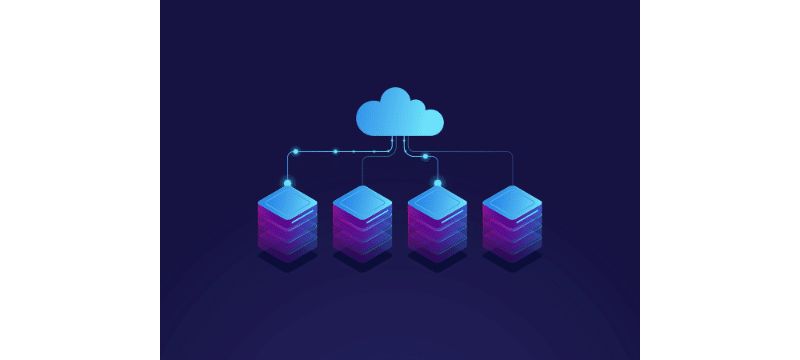Energy Efficient Cluster Computing: How to Get Performance Without the Power Drain
Cloud

The surge in cluster computing has created an energy crisis few saw coming. Organizations racing to deploy systems capable of training AI models and running complex simulations now face a harsh reality: these computational powerhouses are draining budgets and straining power grids at an alarming rate. Once your company has invested in advanced computing, will it be able to afford the electric bill that comes after?
Enhancing cluster energy efficiency delivers a dual benefit: significant cost savings and reduced environmental impact from energy production. Organizations can achieve both by implementing strategic approaches that optimize power usage without sacrificing the computational capabilities needed to solve challenging problems.
What are cluster computing systems?
A cluster is a computing system composed of multiple independent computers, or nodes. The nodes work together to produce a powerful, integrated computing system. The resulting cluster-based systems provide the processing power necessary for today’s complex, high-performance computing tasks.
Characteristics of cluster computing systems include:
- Multiple independent nodes, where each node has its own resources, such as storage and CPU;
- Connectivity utilizing a high-speed local area network (LAN);
- Nodes working together and performing tasks beyond the capabilities of single computers;
- Presenting the cluster to users as a single system image;
- Scaling easily for more power by adding nodes;
- Tolerating faults by redistributing tasks from failed nodes.

Organizations can implement cluster computing to address different user requirements and objectives. Different cluster types are tailored to specific workload demands, ensuring optimal resource use and performance. Choosing the right cluster architecture is crucial for aligning computing power with specific business goals, whether they involve sheer speed or constant uptime.
- High-performance computing (HPC) clusters are designed to perform parallel processing in support of complex scientific and engineering computations.
- High-availability (HA) clusters detect and manage failures to provide continuous availability for mission-critical applications and databases.
- Load-balancing clusters tightly control performance and reliability by dynamically adjusting and distributing requests efficiently across nodes.
Scale or fail: Why your business needs cluster power
Cluster computing delivers the massive power required to run big data and high-demand applications. It is essential for fulfilling these critical business needs:
- The immense speed of high-performance computing (HPC) systems is essential for running parallel applications, including ML model training and financial forecasting. By executing complex algorithms quicker than a single machine, these clusters effectively optimize energy consumption for large-scale tasks.
- Cluster computing offers high scalability, allowing organizations to add or remove nodes precisely as their requirements change. This flexibility eliminates the need for expensive upfront hardware investments.
- HA clusters provide the reliability and availability needed to eliminate downtime for critical applications, such as medical or essential infrastructure systems.
- Companies can reduce cloud costs by building clusters with inexpensive components, reducing capital expenses. Businesses can maximize ROI on hardware and energy consumption by optimizing resource utilization across nodes.
- Businesses can run data-intensive applications, such as analytics, in real time for enhanced decision-making and improved competitiveness.
Beyond cooling: Smart energy efficiency techniques for data centers
The tremendous energy consumption required to support cluster systems presents significant challenges for companies. In some cases, an organization implements cluster-based systems in a large private data center to conduct high-performance computing or ensure system reliability exclusively for its own purposes. Public cloud computing vendors can utilize power efficient clusters to provide scalable services to their customers.
Regardless of who operates the data center, maintaining a green cloud should be a primary objective. Companies that minimize power consumption can save money and lower operational costs for themselves and their customers. Improving energy efficiency is beneficial for the environment and can play a crucial role in fostering a green corporate culture.
Companies can leverage multiple techniques and technologies to enhance energy efficiency.
Strategic power management
Data center operators can reduce energy consumption by efficiently managing usage and adopting a culture focused on power awareness. The following are some of the main power management technologies available to support energy-efficient cluster computing.
Deploying energy-efficient hardware
Companies can opt to utilize low-power components to replace less efficient legacy hardware. This equipment includes CPU, storage systems, and uninterruptible power supply (UPS) solutions designed to optimize energy efficiency and reduce waste.
Dynamic voltage scaling
Operators can utilize software to optimize dynamic power management to specific computing components based on fluctuating workloads. The ability to dynamically adjust energy usage offers substantial energy savings over static power management and is a key component of green computing. The objective is to use only as much energy as necessary to perform a computing task by reducing the voltage when possible.
Virtualization and consolidation
Data centers can minimize the use of physical computers by consolidating virtual machines on fewer servers. Cloud providers extensively utilize virtualization to offer services that help customers reduce energy usage by eliminating the need for on-site hardware.
Energy-efficient cooling strategies

The mechanical and electronic components comprising modern data centers generate tremendous amounts of heat. This heat must be controlled to protect the equipment from damage and provide employees with an acceptable work environment.
Inefficient cooling techniques can result in additional power consumption issues. By adopting more energy-efficient cooling solutions, organizations can achieve substantial energy savings while maintaining optimal performance. Consider implementing the following approaches to reduce power consumption:
- Hot/cold aisle containment is a green design strategy that separates hot and cold airflows within server rooms to optimize energy efficiency and support effective thermal management. Server racks are arranged in alternating rows. Cold aisles have the fronts of racks facing each other and drawing in cold air. Hot aisles have the backs of racks, which expel hot air, face each other. The cold or hot air is isolated and can improve energy efficiency by reducing the mixing of airstreams.
- Free cooling is a super-effective green cooling approach that utilizes naturally cool ambient air or water to remove excess heat from servers without the need for chillers or compressors. Air-side economization brings cool outside air directly into the data center and vents hot air back outside. Water-side economization uses cool water from nearby rivers or lakes to chill the air or supply liquid cooling loops.
- Liquid cooling is an advanced cooling technology that utilizes the heat capacity and thermal conductivity of liquids, such as water, to remove heat from servers and other IT equipment. Liquids can remove heat more efficiently than air-based cooling systems. The technique circulates coolants near hot components to absorb and transfer heat safely away. It is becoming increasingly important to address the density of data centers supporting cluster computing, which can exceed the capabilities of traditional cooling systems.
- Intelligent thermal management leverages the capabilities of artificial intelligence (AI) and machine learning (ML) systems to monitor, predict, and optimize data center temperature. Specialized software dynamically modifies cooling systems, airflow, and workload distribution based on real-time data. This proposed approach to green data center operations benefits from accurate workload characterization and predictive analytics.
Carbon footprint reduction
Companies can gain a significant public relations boost by reducing their carbon footprint, promoting green computing, and achieving a sustainable future. While some green alternatives may not immediately deliver substantial energy savings, they offer long-term benefits that should not be ignored. Data center decision-makers can support power-efficient clusters while taking the following measures to decrease their carbon footprint.
- Operators can integrate renewable energy by purchasing wind, solar, and hydroelectric power. Green initiatives can benefit from architectural support through the construction of data centers that utilize sustainable materials and incorporate solar panels to generate energy.
- Companies can invest in carbon offset projects to mitigate the environmental impact of maintaining high-performance computing clusters. Data centers can offset their greenhouse gas emissions by participating in initiatives such as renewable energy development and reforestation. Demonstrating a green data center mindset can offer a provider a considerable competitive advantage.
- Energy storage and grid optimization integrate advanced energy storage systems and intelligent grid strategies for more efficient, reliable, and sustainable energy usage. Electrical energy is stored by batteries, flywheels, or fuel cells for later use, improving system reliability. Grid optimization adjusts power usage in response to grid conditions, prices, and the availability of renewable sources. The two complementary techniques enable data centers to consume and store power intelligently and efficiently.
Smart solutions: Delivering speed while minimizing power
Data center operators must balance their customers’ performance requirements with their need to reduce energy consumption. Service providers cannot afford to prioritize energy efficiency techniques over performance. Companies can utilize the following methods to strike the optimal balance between performance and energy efficiency.
- Workload optimization is the intelligent management of workloads to maximize performance while minimizing a data center’s energy usage, operational costs, and carbon footprint. It is a foundational element of green data centers. The objective is to run a workload at the optimal time using the most suitable resources while consuming the least amount of energy. Teams may implement software-defined infrastructure to automate efficient resource allocation.
- Edge computing places computing power close to users to reduce latency and reduce demands on centralized data centers. Companies can reduce energy requirements by providing high-end computing solutions, such as a fast, connected PC cluster, rather than relying on distant data center resources.
- Providers operating in multiple geographic regions can distribute workloads to leverage inexpensive or renewable energy sources. Companies can run less resource-intensive and time-sensitive applications in areas that maximize energy efficiency, thereby reducing their environmental impact without adversely affecting performance.
- Data centers can practice high-density computing by packing more computing power into smaller physical spaces. This approach enables them to deliver more performance per square meter and reduce their physical footprint. However, it requires advanced cooling and power management techniques.
Conclusion
If you’re running powerful, scalable clusters, you have to think smart about energy. The good news is organizations have plenty of options to save a lot on power and embrace green computing. Since cluster computing is crucial for business and science, it’s essential to blend high performance with energy efficiency—you can’t afford to choose one over the other.
